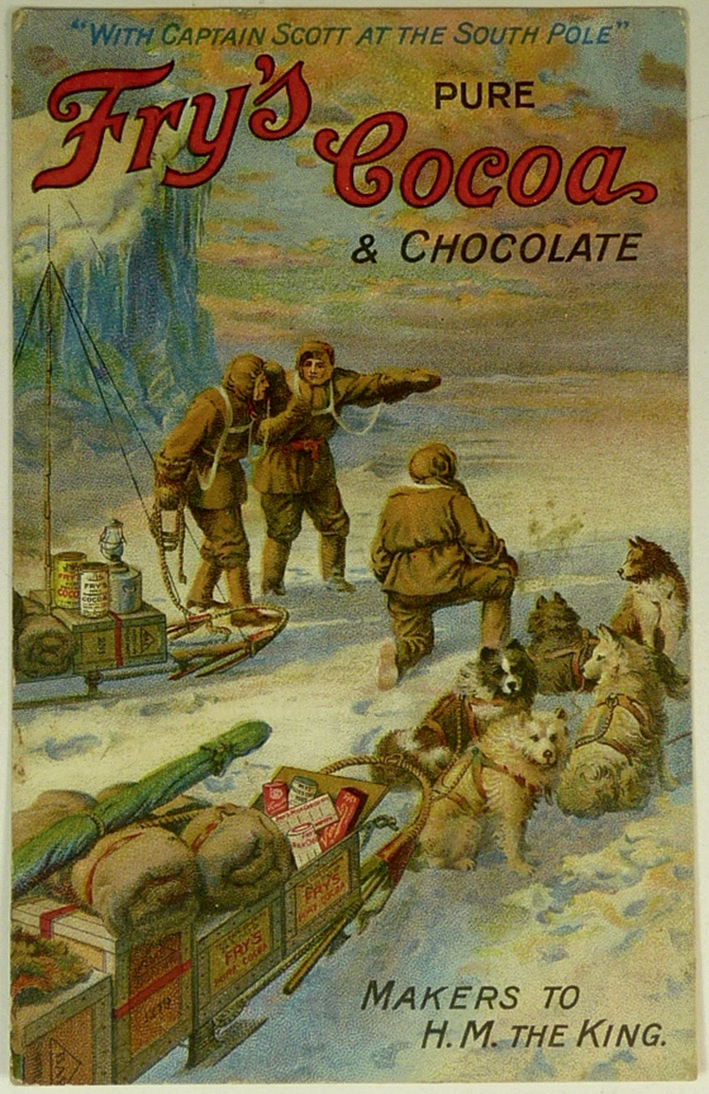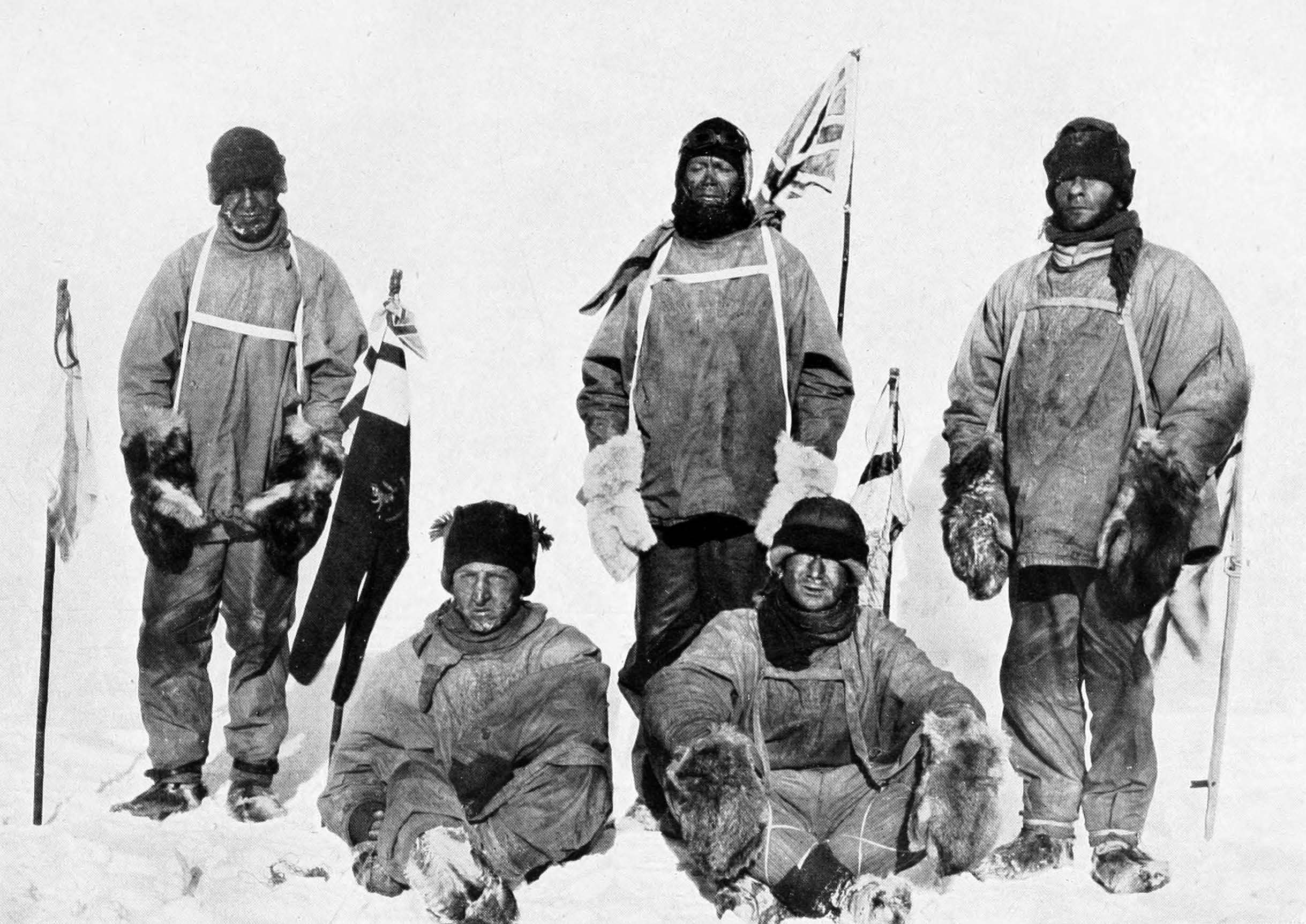Cocoa was always recognised as an excellent food for polar explorers. Sir William Edward Parry in 1827 made one of the earliest expeditions to the North Pole. He reached 82°45' north, a record that stood for nearly five decades. Each member of the expedition was given a pint of cocoa when setting out in the morning, with biscuit powder to mix with it.
From 1857 Sir Frances Leopold McClintock spent two years trapped in icy conditions seeking a previously lost expedition party. His provisions included Handford & Davies cocoa.
Norwegian explorer Fridtjof Nansen narrowly failed to reach the geographical North Pole in 1893, powered by Kudos Cocoa Essence (made by Bovril) and Cadbury's Cocoa Essence.
Rowntree's Elect was the cocoa of choice for Sir Ernest Shackleton, who got to within 97 miles of the South Pole in 1909. Other accounts say that Fry had an exclusive contract with Shackleton but that he also dug up some Cadbury's Cocoa Essence left behind by an earlier attempt by Robert Falcon Scott. Fry sponsored Scott's 1910 expedition to the tune of £1,000, and the daily ration for the final leg to the South Pole included 16g of Fry's cocoa and 85g of sugar, made into a pot of hot chocolate every morning and five nights a week. The full ration, which also included tins of Rowntree's Elect Cocoa, provided around 4,500 calories a day, well short of the amount required for sledging in freezing conditions, and Scott's party starved and died on the return trip. Roald Amundsen won the race to the pole and returned safely, having gained weight. He had taken five times as much cocoa.
Heinz developed a range of self-heating tins in the early 1940s, mainly soups but also malt milk and cocoa milk, for military use but known to have been taken to the antarctic. Inside the tin was a tube filled with smokeless fuel that was lit with a fuse at the top of the tin. Within a few minutes, the tin and its contents were piping hot and could be poured out.
In 1989 American explorer Will Steger's team of six was the first to cross Antarctica with dogs, consuming over 2,000 cups of Swiss Miss cocoa on the way.

